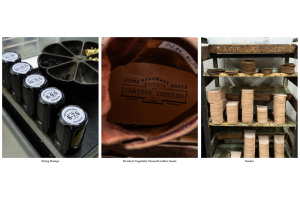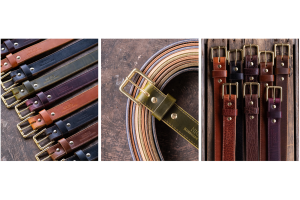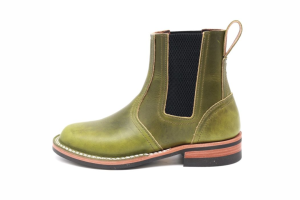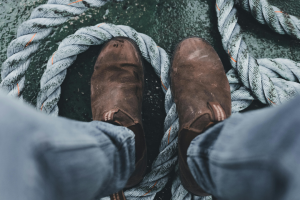What Is A Firefighter Hotshot?
Hotshot firefighters, also called a hotshot crew, are the Special Forces of firefighting. They deploy rapidly, can stay deployed for weeks or more at a time, and often get called out to fight the worst fires in the most dangerous hotspots.
They face a lot more danger than other fire crews. One of the worst tragedies in the history of wildland firefighting was the Yarnell Hill Fire, which resulted in the deaths of 19 of the Granite Mountain Hotshots.
Today, there are slightly more than 100 hotshot crews stationed around the country. Let's learn a little more about them.
What Is A Firefighter Hotshot?
The concept of the "hotshot" fire crew emerged in the postwar era.
Up until that point, wildland firefighting was almost entirely done on a volunteer basis. People grabbed whatever gear they could, put on whatever they could use as firefighter boots and went to work, or were assigned to firefighting as part of the Civilian Conservation Corps, a work relief program established during the Great Depression.
Just after World War II, a few groups of firefighter work crews assigned to the San Bernardino Forest started using the name "hotshots," perhaps most notably the Del Rosa Hotshots. These small crews, usually teams of around 20 men, were able to rapidly deploy to fight forest fires in the San Bernandino area, which established the concept.
And that is what a hotshot firefighter does: they respond to forest fires rapidly, carrying hand tools and whatever gear they need to fight fires...often for days or weeks at a time beyond supply lines.
At the time, wildland firefighting was coordinated through the Inter-Regional Fire Suppression System, a network that monitored the national forests for fire dangers and dispatched fire crews where needed.
They perceived the need for rapid responders who could hit the ground running, and by the early 60's, had established several crews around the country for rapid deployment to fight forest fires.
Every crew was stationed close to an airport, so they could get their gear and deploy quickly. Those crews carried hand tools, along with what they needed to live out of a pack for extended periods while fighting fires.
By the early 70s, the IRFS was superseded by the National Interagency Fire Center, and more crews were added over the years.
Today, there are more than 100 hotshot firefighter crews stationed around the country, responding to wildfires throughout the United States in addition to other natural disasters when called upon.
There are more than 1 million firefighters in the United States, including volunteers and full-time career firefighters...but there are only a few hundred hotshots. They are the elite of the profession.
What Does A Hotshot Firefighter Do?
Hotshots do everything that typical wildland firefighters do from initial attack on the fire to clean-up after it's been contained, but the difference is in how it's done.
Often enough, they hike into the backcountry until they reach the fire, and then start responding as needed with the tools they've brought with them. Most are employed seasonally as wildland firefighters and have to respond within hours of being ordered to a fire or assignment.
Hotshot crews usually are made up of 20 to 22 people. Most are employed by either the Forest Service or the Bureau of Land Management, but there are some crews that are employed by other federal and some state agencies.
To become a hotshot, you usually need at least 1 season of fire experience, and have to pass a rigorous training course and physical fitness test.
When they arrive at a fire site, hotshots work independently and respond as-needed to the situation on the ground. That can be containment, controlled burns, mop-up, whatever the fire in question might call for.
Unlike other wildland firefighters, though, they are usually in the hottest part of the fire and a long way from any supply lines. They have to live out of their packs, and stay on the ground for days or weeks at a time if needs be.
But elite first responders also face greater risks.
One of the worst disasters in American firefighting history was the Yarnell Hill Fire.
The Yarnell fire was started by dry heat lightning in late June of 2013, eventually spreading to more than 8,000 acres near Yarnell, Ariz., about 80 miles outside Phoenix. More than 400 firefighters responded, including the Granite Mountain Hotshots of the Prescott Fire Department.
A change in the winds caused the fire to spread to their escape route, cutting them off and intensifying the fire. Rescue teams were repulsed, and water and retardant drops weren't able to save them, resulting in the deaths of 19 of the Granite Mountain Hotshots on June 30.
The wind died down after that, and the fire was contained within two weeks, but it remains the deadliest event in the history of wildland firefighting.
The events were portrayed in the movie "Only The Brave," and the site was christened the Granite Mountain Hotshots Memorial State Park in their memory.
A Rough Job That Requires Serious Firefighter Boots
One of Nick's Handmade Boots flagship products are our Hot Shot Fire Boots. These boots are made to withstand the demands of wildland firefighting.
A lot of hotshots wear them on the fireground. In fact, they're some of our most frequent customers.
Tough jobs demand tough equipment, and Nick's Handmade Boots has been supplying them to these brave men and women since 1965. As long as they still have to fight fire, we will keep making boots the only way we know how.




